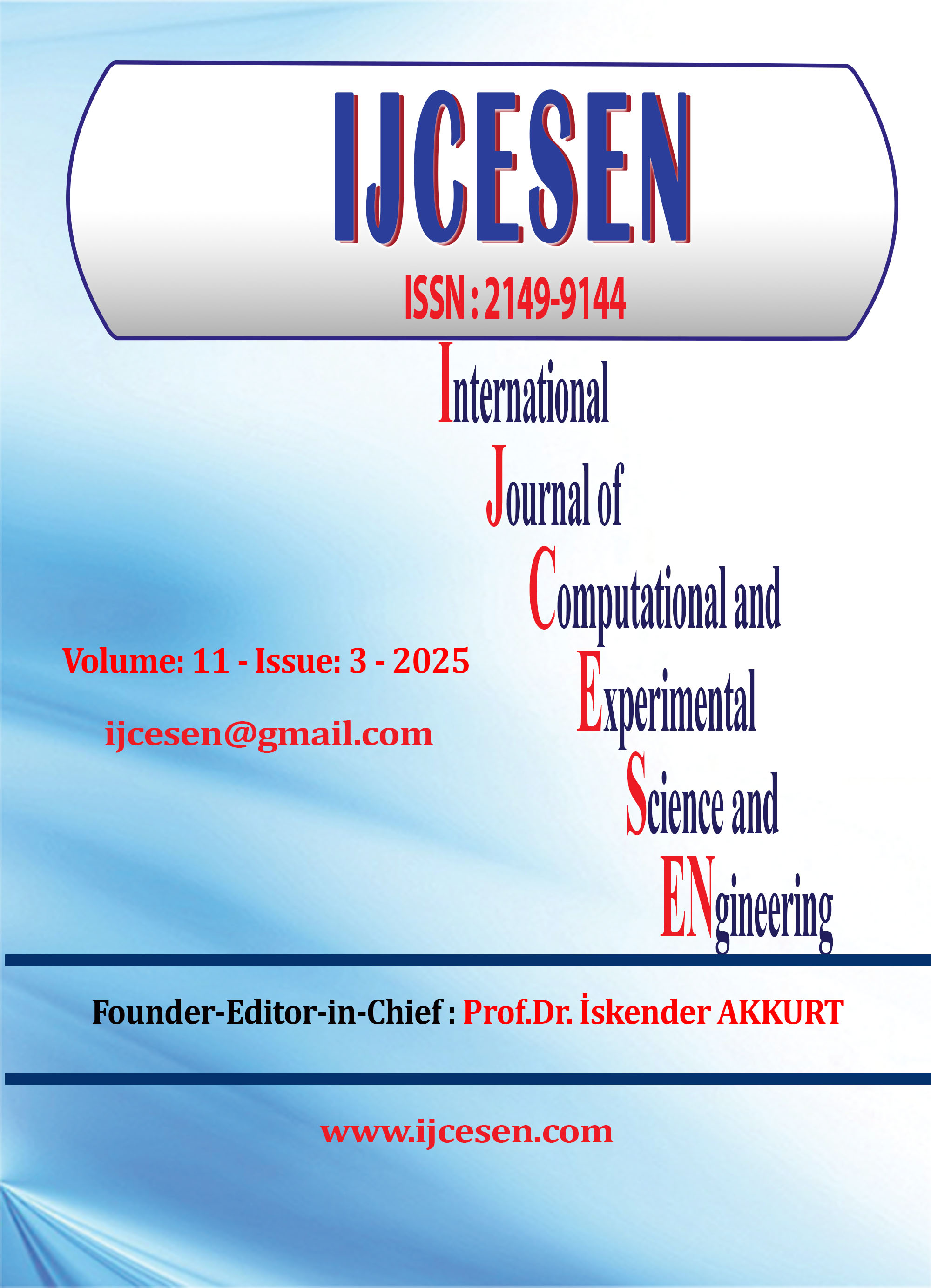Designing a Solar City Using Solar Energy to Generate Energy through Innovative Planning and Energy Simulation System (Kufa University Case Study)
DOI:
https://doi.org/10.22399/ijcesen.2686Keywords:
Innovative Planning, Solar Radiation, Solar Energy, Simulated Solar Energy System, Environment, SustainabilityAbstract
The research indicates the possibility of using solar radiation and its role in generating electricity through photovoltaic solar systems that do not emit environmental pollutants. To solve the problem of generating electric power from fossil fuels that pollute the environment, the study was conducted to answer the following questions: Do solar energy projects have the potential to preserve and sustain the environment? And is there an economic advantage compared to energy sources generated from fossil fuels? Climate characteristics have an impact on production efficiency and increase in electrical energy consumption, and there is a relationship between climatic characteristics and solar radiation, as well as between electric energy produced and climatic characteristics. Because the University of Kufa is one of the first universities to use solar renewable energy in its corridors, it was important to shed light on this aspect for its sustainability in the field of energy. Through the research, we found that the University of Kufa is qualified to be a solar city that produces enough energy and even a surplus to serve its neighboring regions by providing them with produced electric energy. It was found from the feasibility study conducted for the project in terms of cost, system lifespan, and its location within the university’s borders that it is the right place for installing solar systems. Many of the electric towers are located inside the university, facilitating the process of connecting them to the governmental electricity grid. Thus, it is considered a support and backing for governmental electricity.
References
[1] Al-Shamrti, A. R. M. J. (2011). Calculating the Quantity of Electricity Generated by Solar Radiation in Iraq. Master's thesis, College of Education for Girls, University of Kufa.
[2] Al-Fahdawi, A. S., & Hassan, F. (2009). The potentials of the Anbar Governorate from solar radiation and its role in the development of renewable energy. Master's thesis, University of Anbar.
[3] Murray, R., Byars, M., Coggburn, C., Gochis, C., Smith, P., Glidden, J., & Stevens, B. (2014). A Solar Energy Proposal for the University of Kansas. https://www.readkong.com/page/a-solar-energy-proposal-1397859
[4] Al-Basri, N. A. (2020). Innovative Planning (Innovative and Smart Solutions in Planning cities and regions). Dar Al-Ibdaa.
[5] Al-Basri, N. A. (2020). Innovative Planning (Innovative and Smart Solutions in Planning cities and regions). Dar Al-Ibdaa.
[6] Times of India. (n.d.). Sun cities: Rajasthan solar projects under a cloud. Retrieved from https://timesofindia.indiatimes.com/city/jaipur/sun-cities-rajasthan-solar-projects-under-a-cloud/articleshow/18124919.cms
[7] ASCIMER. (2015). Assessing Smart City Initiatives for the Mediterranean Region. European Investment Bank.
[8] European Parliament and Council of the European Union. (2009). Directive 2009/28/EC on the promotion of the use of energy from renewable sources.
[9] National Energy Strategy. (1991). Executive Summary.
[10] Solarbotics.net. Solar cells – performance and →use. chemistryexplained.com
[11] Trinh, C. T., Schlatmann, R., & Amkreutz, D. (2017). Progress in and potential of liquid phase crystallized silicon solar cells. Solar Energy. 175;75-83. https://doi.org/10.1016/j.solener.2017.12.041 DOI: https://doi.org/10.1016/j.solener.2017.12.041
[12] Carlson, D. E. (1977). Amorphous silicon solar cells. IEEE Transactions on Electron Devices. 24(4);449–453. https://doi.org/10.1109/t-ed.1977.18756 DOI: https://doi.org/10.1109/T-ED.1977.18756
[13] Balcioglu, H., EL-Shimy, M., & Soyer, K. (2017). Renewable energy in: EL-Shimy M, editor. Economics of variable renewable sources for electric power production. Lambert Academic Publishing.
[14] Energy4Impact. (n.d.). Solar power system for home - Renewable energy for homes. https://www.energy4impact.org/solar
[15] Meacon. (n.d.). Powersight data logger PS2500. http://www.meacon.co.za/Powersight/Data_Logger_PS2500.html
[16] Rajput, S. K. (2017). Solar Energy Fundamentals, Economic and Energy Analysis. Northern India Textile Research Association.
[17] Al-Karim, M. A. (2009). The Book of Al-Tala' Al-Shamash. Al-Noor Electronic Library.
[18] Ministry of Communications, General Authority for Meteorology and Seismic Monitoring in Iraq. (n.d.). Climate data. Unpublished data.
[19] Ibrahim, I. A. (1999). Statistical and Geographical Methods (2nd ed.). University Knowledge House.
[20] Crane, M. A. (1989). Solar cells, principles of work and development and applications of the system (Y. M. Hassan, Trans.). Dar Al-Kutub for Printing.
[21] European Agency for Renewable Employment Centers (EUREC). (2014). The Future for Renewable Energies: Expectations and Trends. Science Publishers Ltd.
Downloads
Published
How to Cite
Issue
Section
License
Copyright (c) 2025 International Journal of Computational and Experimental Science and Engineering

This work is licensed under a Creative Commons Attribution 4.0 International License.





